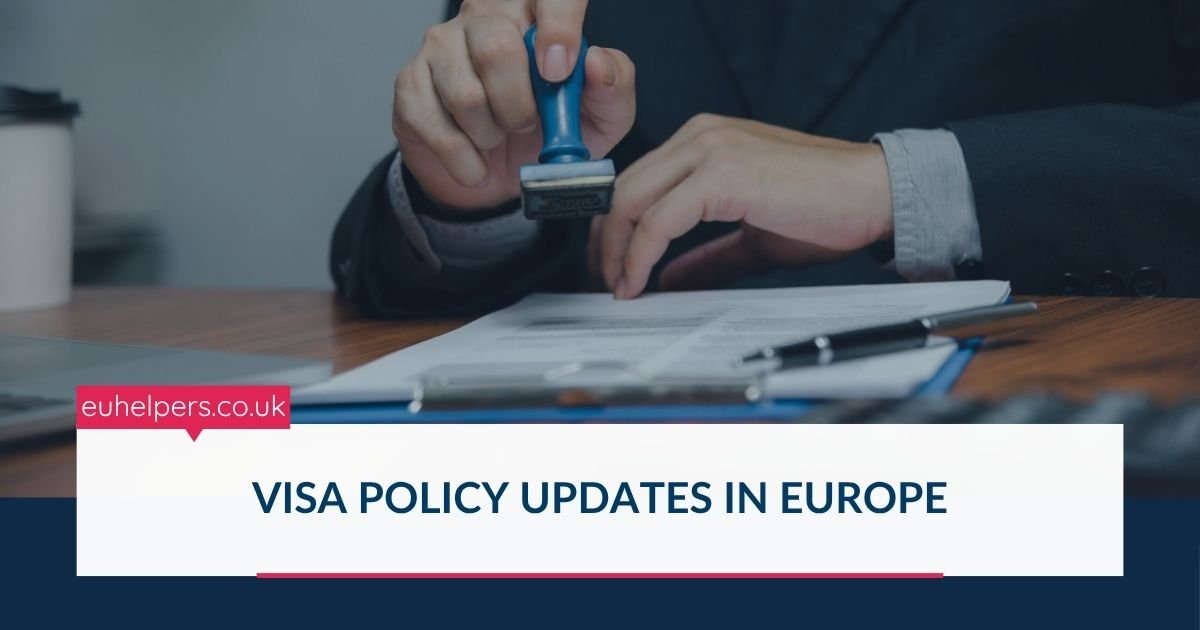The European Union is set to introduce a series of transformative updates to its visa and border management systems in 2025. These changes are part of the EU’s broader strategy to enhance security, streamline border checks, and better manage immigration and travel data. Two of the most impactful systems being rolled out are the Entry/Exit System (EES) and the European Travel Information and Authorization System (ETIAS). Additionally, the Visa Suspension Mechanism is being strengthened to ensure greater compliance from third-country travelers.
Here’s a detailed look at these updates and what they mean for international travelers to the EU:
1. Entry/Exit System (EES): Replacing Manual Passport Stamping
The EES is a new automated IT system designed to replace the traditional manual passport stamping process for non-EU travelers entering or exiting the Schengen Area. Expected to go live in late 2024 or early 2025, this system will electronically register the following information at border crossings:
-
Traveler identity
-
Date and place of entry and exit
-
Biometric data (facial image and fingerprints)
-
Visa validity (for those requiring short-stay visas)
Who Is Affected?
The EES applies to travelers from non-EU countries, including those who do not require a visa for short stays. Whether you're a tourist, business traveler, or frequent flyer, your entry and exit will now be digitally recorded.
Key Benefits:
-
Speeds up border crossings
-
Reduces the risk of passport fraud and overstays
-
Automatically detects the number of days a person has spent in the Schengen Area (90/180 rule)
Implications:
Travelers will need to be prepared for biometric scanning at automated border gates and digital tracking of stay durations. Those who overstay will be automatically flagged, leading to potential fines, entry bans, or future visa denials.
2. European Travel Information and Authorization System (ETIAS): New Pre-Approval for Visa-Exempt Travelers
Expected to launch in spring 2025, ETIAS is the EU’s new pre-travel screening program for travelers from visa-exempt countries (e.g., the U.S., Canada, Australia, Japan, etc.). While these travelers will not need a visa, they will be required to:
-
Apply online for authorization
-
Pay a small processing fee (currently set at €7)
-
Receive approval before traveling to any Schengen country
Key Details:
-
Valid for 3 years or until your passport expires (whichever comes first)
-
Grants stays of up to 90 days in any 180-day period
-
Designed similarly to the U.S. ESTA system
Security Enhancements:
ETIAS will conduct background checks across multiple security databases (such as Interpol and Europol) to identify any potential threats. Those flagged for security, immigration violations, or public health risks may be denied authorization.
Who Needs ETIAS?
Citizens of approximately 60 countries that currently enjoy visa-free travel to the EU will be affected, including:
-
United States
-
United Kingdom
-
Canada
-
Australia
-
Japan
-
South Korea
-
UAE, and more
3. Strengthening the Visa Suspension Mechanism
Alongside EES and ETIAS, the Visa Suspension Mechanism is being reinforced to allow the EU greater flexibility in managing visa-exempt travel agreements.
Key Features:
-
Allows the EU to suspend visa-free travel arrangements with countries whose nationals pose migration or security risks.
-
New rules will make it easier and faster to revoke visa-free status, particularly for countries that:
-
Have low return rates of nationals ordered to leave the EU
-
Show increased irregular migration
-
Have weak cooperation with EU migration authorities
-
Impact on Travelers and Governments:
Countries benefiting from visa-free access to the EU may face more scrutiny and be required to ensure better cooperation in areas like readmission agreements, document security, and migration control. Failure to comply could lead to a temporary or permanent suspension of visa-free access.
4. Broader Impacts on Travel and Mobility
These changes are not isolated. Together, EES, ETIAS, and the updated Visa Suspension Mechanism are part of a broader modernization strategy that aims to:
-
Tighten EU external border controls
-
Improve immigration enforcement
-
Boost interoperability among EU security and migration databases
-
Enhance traveler experience through digital processing
For frequent travelers and non-EU nationals planning long-term stays, study programs, or work contracts, it will be essential to stay informed and fully comply with the new digital systems. Failure to adapt could lead to denied entry, overstay penalties, or travel restrictions.
Tips for Travelers in 2025 and Beyond
-
Check your ETIAS eligibility and apply well in advance of your trip (authorization may take up to 96 hours or more if additional documents are needed).
-
Keep your passport valid for at least six months beyond your planned departure.
-
Track your Schengen days carefully using EES data to avoid overstays.
-
Understand your rights and obligations, especially if traveling on a visa-free agreement.
-
Monitor EU travel announcements for updates on ETIAS, EES, or changes to your country’s visa waiver status.
As the EU continues to modernize its border and visa systems, 2025 will mark a major turning point for global mobility within Europe. While these changes may introduce extra steps for travelers, they are also designed to enhance security, efficiency, and transparency. Staying informed, planning ahead, and adhering to new digital requirements will be essential for smooth and hassle-free travel to the EU.

